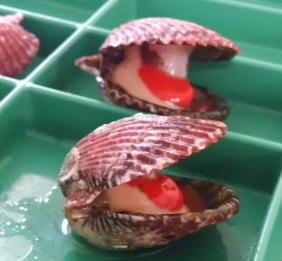Effect of homeopathic medicines on growth, survival and gastrointestinal microbiota of juvenile scallop Argopecten ventricosus
Efecto de medicamentos homeopáticos sobre crecimiento, supervivencia y microbiota gastrointestinal, en juveniles del pectínido Argopecten ventricosus.

Show authors biography
Objective. To study the effect of homeopathic medicines on growth, survival and gastrointestinal (GIT) microbiota of Catarina scallop Argopecten ventricosus. Materials and methods. Five homeopathic treatments (T1) ViP-ViA 1D, (T2) ViP-ViA 7C, (T3) AcF-MsS 1D, (T4) PhA-SiT 7C, (T5) ViT 31C and three controls: (C1) diluted ethanol 1:99, (C2) diluted/succussed ethanol 1C and (C3) distilled water were evaluated (21 days) in triplicate. Microbiota was analysed by sequencing the V3-V5 region of the 16S rRNA genes. Results. The best growth in shell-length corresponded to T1 (117 µm d-1) and T2 (108 µm d-1) and the highest survival (P ≤ 0.05) to T3 and T5, stating T3 as the best HOM-treatment. A clear separation was found in rarefaction curves of HOM-treated against un-treated control scallops. Significant differences (P ≤ 0.05) were found for Phyla (Proteobacteria> Actinobacteria> Firmicutes> Bacterloidetes>Chloroflexi and for Genera: Symbiobacterium> Microbacterium> Methylobacillus> Bacillus> Paenibacillus> Burkholderia> Nostoc> Methylobacterium> Leucobacter). The genus Symbiobacterium was dominant in the HOM-treatment T5 (Vidatox®), finding significant differences (P ≤ 0.05) with respect to all treatments. At species level, Microbacterium maritypicum (Actinobacteria) showed a greater relative abundance (P ≤ 0.05) in T1 and T3 and Symbiobacterium toebii (Firmicutes) was also significantly higher (P ≤ 0.05) in abundance in T5 and T2, both against initial T0. Conclusions. This study showed for the first time, the composition of the GIT microbiota in Catarina scallop A. ventricosus and focused on the potential applicability of homeopathic medicines to improve overall performance and modulate the GIT microbiota of the species.
Article visits 1347 | PDF visits























